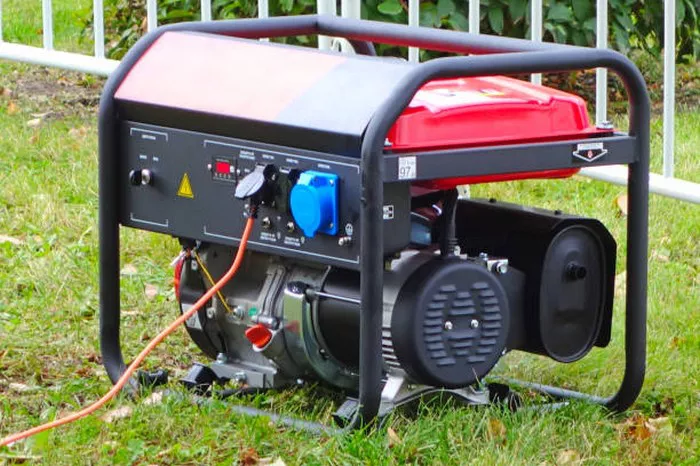The washing machine has become an indispensable appliance in modern households. It simplifies the laborious task of washing clothes, saving time and effort. Despite its widespread use, there is a fundamental question that arises: is a washing machine classified as electrical equipment? To answer this question, one must examine its design, working principles, and dependence on electricity. This article delves into the nature of washing machines, exploring their components, functions, and classification as electrical equipment.
Understanding Electrical Equipment
Electrical equipment refers to devices or machines that rely on electrical energy to perform their intended functions. These devices typically include components such as motors, switches, control circuits, and heating elements, all of which operate using electricity. Examples include refrigerators, microwaves, electric fans, and power tools. The classification of a device as electrical equipment hinges on its dependence on electricity to operate effectively.
Components of a Washing Machine
To classify a washing machine, it is essential to analyze its components and their respective roles. Below are the key elements of a typical washing machine:
Electric Motor
The motor is the heart of the washing machine, driving the drum’s rotation during the wash and spin cycles. This motor converts electrical energy into mechanical energy, enabling the machine to agitate and clean clothes effectively.
Control Panel and Circuitry
Modern washing machines feature sophisticated control panels that allow users to select wash cycles, water temperature, and spin speeds. These panels are powered by electricity and depend on intricate circuits to process user inputs and control operations.
Pump
The water pump in a washing machine is another crucial component powered by electricity. It drains the water after the wash and rinse cycles, ensuring the machine operates efficiently.
Heating Element
Many washing machines include a heating element to raise the water temperature, enhancing the cleaning process. This element converts electrical energy into heat energy.
Sensors and Safety Features
Advanced washing machines employ sensors to detect load size, water level, and even imbalances during spinning. These sensors rely on electrical power to function, improving the machine’s efficiency and safety.
Drum and Tub
Although the drum and tub are primarily mechanical components, their operation is directly influenced by electrically powered parts like the motor and pump.
The Role of Electricity in a Washing Machine
Electricity is indispensable for the operation of a washing machine. From powering the motor and pump to controlling the user interface and sensors, every major function depends on electrical energy. While some aspects of the washing machine involve mechanical processes (e.g., spinning, draining), these are orchestrated by electrically powered components.
Why a Washing Machine Qualifies as Electrical Equipment
Based on the criteria for electrical equipment, a washing machine qualifies for the following reasons:
Primary Energy Source
The washing machine’s primary energy source is electricity, which drives its motor, pump, and other essential components. Without electricity, the machine cannot perform its core functions.
Electrical Components
The washing machine incorporates several electrical components, including motors, heating elements, and control circuits, all of which are integral to its operation.
Dependence on Electrical Systems
Every aspect of a washing machine’s functionality—from selecting a wash program to draining water—relies on electrical systems. Even mechanical movements are initiated and controlled electrically.
Comparison with Other Types of Equipment
To solidify the washing machine’s classification, it is useful to compare it with other equipment types:
Mechanical Equipment
Mechanical equipment primarily relies on manual or mechanical energy for operation. For example, a hand-operated grain mill is purely mechanical. Unlike these devices, a washing machine’s core functions are powered by electricity, distinguishing it from purely mechanical equipment.
Hybrid Equipment
Some devices combine mechanical and electrical components, such as bicycles with electric motors (e-bikes). While washing machines also integrate mechanical parts, their operation is overwhelmingly dependent on electricity, aligning them more closely with electrical equipment.
Pure Electrical Devices
Devices like electric kettles or hair dryers rely exclusively on electricity, with minimal mechanical components. Washing machines share similarities with these devices due to their reliance on electrical energy but incorporate additional mechanical functionality.
The Evolution of Washing Machines
Historically, washing machines were not always electrical. Early designs, such as scrub boards and manually cranked washers, relied on human effort. However, the advent of electrical motors in the late 19th and early 20th centuries revolutionized washing machine design, enabling automation and enhanced efficiency. Today, nearly all washing machines are electrically powered, underscoring their classification as electrical equipment.
Safety and Maintenance of Washing Machines
As with any electrical equipment, washing machines require careful maintenance and adherence to safety guidelines. Here are some considerations:
Electrical Safety
Ensure proper grounding and avoid overloading electrical circuits to prevent hazards.
Regular Maintenance
Clean the drum, filters, and detergent dispenser periodically to maintain efficiency and prolong the machine’s lifespan.
Inspection of Electrical Components
Periodically check the power cord, plug, and internal wiring for wear and tear to avoid electrical malfunctions.
Environmental Impact
The widespread use of washing machines raises concerns about energy consumption and environmental impact. Manufacturers are addressing these issues by developing energy-efficient models with advanced features like low-power motors and sensors. These innovations reduce electricity usage, helping to mitigate environmental concerns.
Conclusion
A washing machine is unequivocally classified as electrical equipment. Its dependence on electricity to power key components such as motors, pumps, and control circuits solidifies this classification. While incorporating mechanical elements, the washing machine’s functionality revolves around electrical energy. Understanding this classification highlights the machine’s complexity and emphasizes the importance of safe usage and energy efficiency. As technology advances, washing machines continue to evolve, enhancing their role as essential electrical equipment in modern homes.

